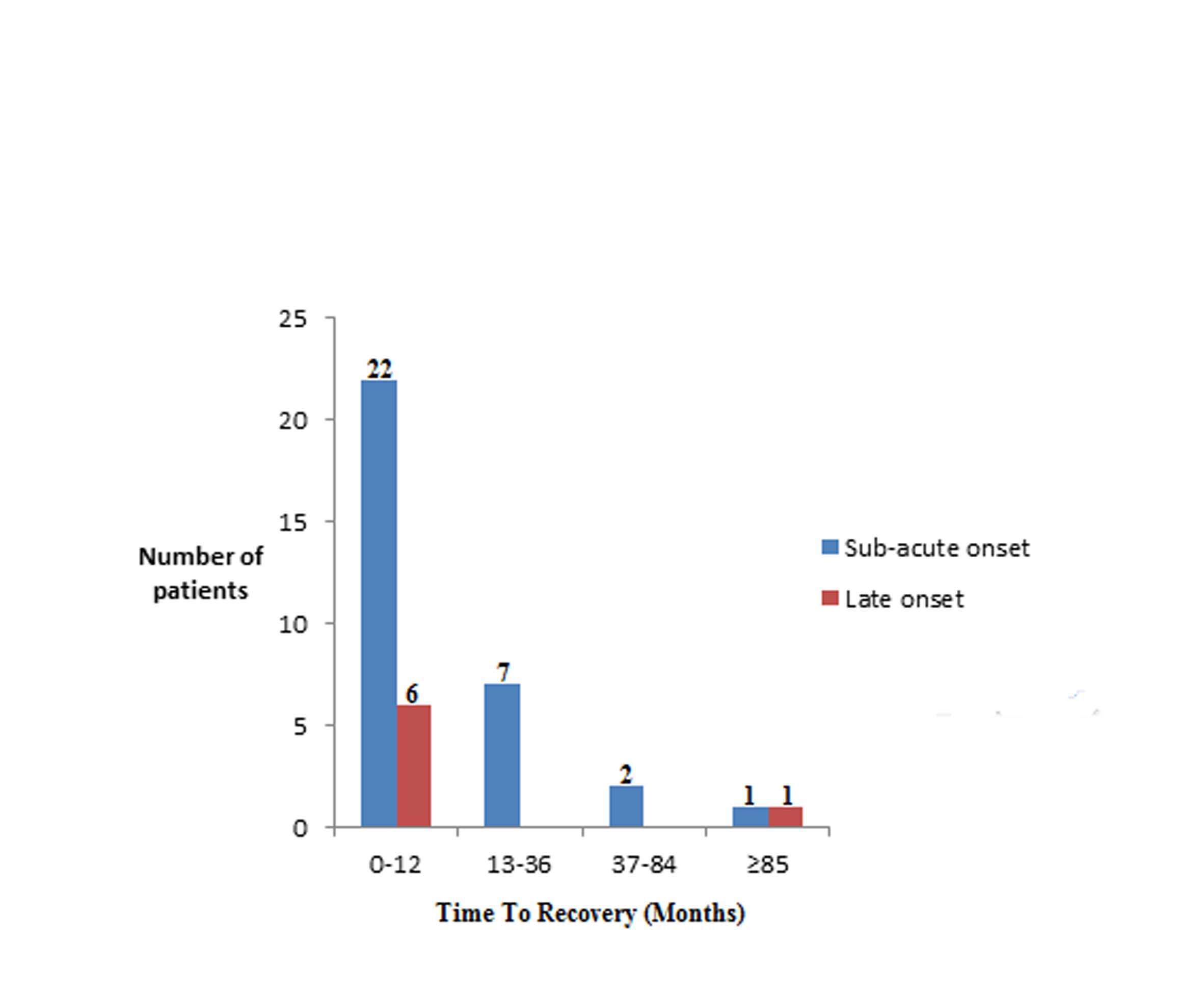
Sub-acute vs. Late-Onset Presentation of Onco-therapy Related Cardio-Toxicity: Predictors of Cardiac Function Recovery and Long-Term Outcome
Background: Cardio-toxicity by oncological therapies may present shortly or long time after the exposure. Cardiac depression may have a transient or persistent character. The data regarding the differences in clinical profile of sub-acute compared to late onset cardio-toxicity is limited and the effect on long term prognosis is poorly defined.
Purpose: to describe the differences between sub-acute and late onset cardio-toxicity in regard to LVEF recovery as well as all-cause mortality.
Methods: Our analysis comprised of 91 patients diagnosed between 1998 and 2016 as cardiomyopathy with impaired systolic function. All had history of malignancy and exposure to chemotherapy or biological therapy.
The study population was classified according to two main categories; sub-acute and late-onset cardio-toxicity based on presenting < 1 year or > 1 year after oncotherapy. Recovery of LVEF (to ≥ 50%) and total mortality constituted the primary end points of the analysis.
Results: Fifty-three (58%) patients were classified as sub-acute, while 38(42%) as late-onset cardio-toxicity. There were no major differences in baseline clinical characteristics between the two categories. Mean LVEF among those with sub-acute onset was higher compared to those with late-onset cardio-toxicity (37% vs. 28%, P< 0.001). Patients with sub-acute onset were more likely to fully recover their ejection fraction compared to those in the late-onset group (64% vs. 22%, P<0.001).
Independent predictors of recovery of systolic function were Trastuzumab therapy (HR=9.83; 95%CI 1.74-55.4,P=0.01), and higher LVEF at baseline (HR=1.08;95%CI 1.01-1.16,P=0.028 ). Long-term mortality rates were similar between the groups with sub-acute and late-onset cardio-toxicity. Recovery of LVEF was independently associated with reduced mortality.
Conclusions: Recovery of LV function may occur in sub-acute and late-onset cardio-toxicity and may happen over a protracted period of time.Our findings suggest that early detection and treatment of onco-therapy associated cardio-toxicity play an important role in LVEF recovery and long-term prognosis.



Powered by Eventact EMS